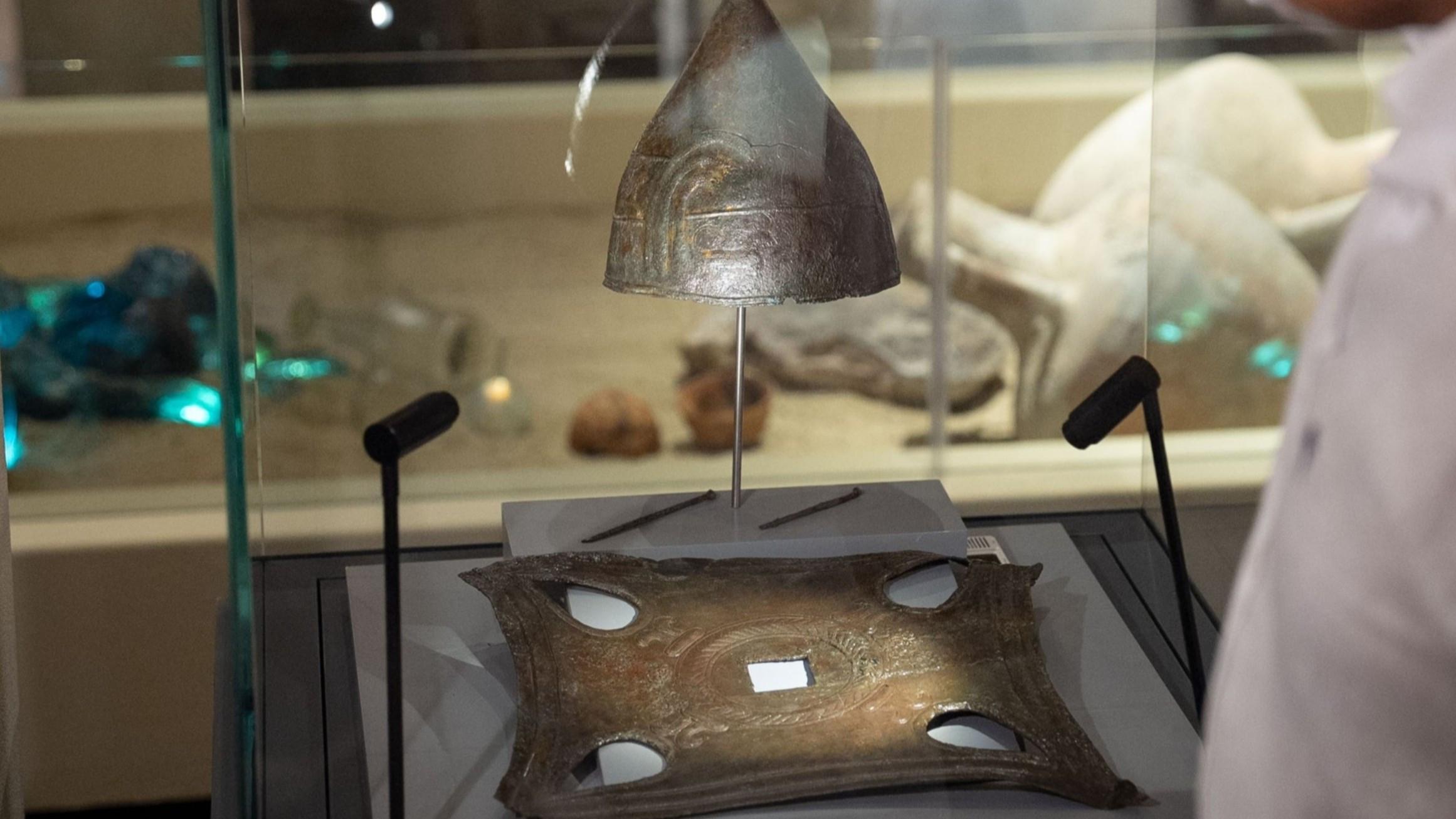
Excavations at the exceptionally preserved Urartian fortress of Ayanis, ongoing for 38 years, continue to unearth significant finds that shed light on the region’s ancient history.
Conducted in tandem with work at Garibin Tepe, the excavations offer a unique and holistic window into the settlements of the Urartian period.
Among the most notable discoveries are a bronze helmet adorned with mythological figures and an architectural revetment plaque from the Temple of Haldi — both now on display at the “Golden Age of Archaeology” exhibition in the Presidential Library in the capital Ankara.
The head of the Ayanis and Garibin Tepe excavations, Mehmet Işıklı, emphasized the importance of both sites in understanding Urartian culture.
Speaking to reporters at the exhibition venue, Işıklı recalled the origins of the Ayanis project. “Ayanis is one of the longest-running excavations in both our country and Urartian archaeology. It began in 1989 — the very year I joined as a student. Since then, the work has expanded, and in recent years, we have also incorporated the nearby Garibin Tepe excavations.”
Reflecting on the longevity of such archaeological efforts, Işıklı noted that it is difficult to predict an excavation's lifespan. “It depends on the nature of the site and progress of the work. In Türkiye, we have examples like Ephesus and Hattuşa — excavations that have continued for centuries and still excite us today,” he said.
“At Ayanis, our passion remains undiminished. As long as we are in good health and our state supports us, this work could continue for hundreds of years. Methods and perspectives evolve over time, so we avoid setting an arbitrary endpoint.”
He credited the support of local authorities and the Culture and Tourism Ministry for accelerating progress and revealed that an important project is underway to open new areas within the temple complex to visitors.
“We plan to prepare two sections of the site for public access this year, contributing both to national and regional tourism,” Işıklı said.
The Temple of Haldi — dedicated to the chief deity of the Urartians — has yielded remarkable bronze artifacts, two of which feature prominently in the current exhibition in Ankara.
These include a helmet intricately decorated with mythological motifs and a bronze architectural revetment panel.
Işıklı expressed pride in participating in the exhibition, which was inaugurated on Aug. 6 with the attendance of President Recep Tayyip Erdoğan during the International Archaeology Symposium.
“It is deeply gratifying to see archaeology discussed at the highest level of the state. For us archaeologists, such recognition is both exciting and an honor.”
The Ayanis excavation has also been a major contributor to the Van Archaeology Museum, which opened two years ago and houses the world’s richest Urartian collection.
According to Işıklı, thousands of artifacts from the site, both inventoried and for study, are preserved there.
“From Ayanis alone, we have provided the museum with tens of thousands of artifacts. It is a remarkably rich excavation.”
Fortress preserved by time
One factor that sets Ayanis apart is its exceptional preservation. While looting and destruction have affected many archaeological sites — both in antiquity and in the Middle Ages — Ayanis has remained largely untouched.
“Our fortress was sealed when it collapsed, preserving the Urartian period beneath it in remarkable condition. As we uncover it, we gain an abundance of information and materials,” Işıklı explained, estimating that between 10,000 and 15,000 artifacts have already been recovered.
For nearly four decades, the sealed fortress of Ayanis has guarded its secrets. With each excavation season, the secrets emerge, offering invaluable insights into the Urartian civilization — and, as Işıklı suggests, there is enough left buried to keep future generations of archaeologists digging for centuries to come.